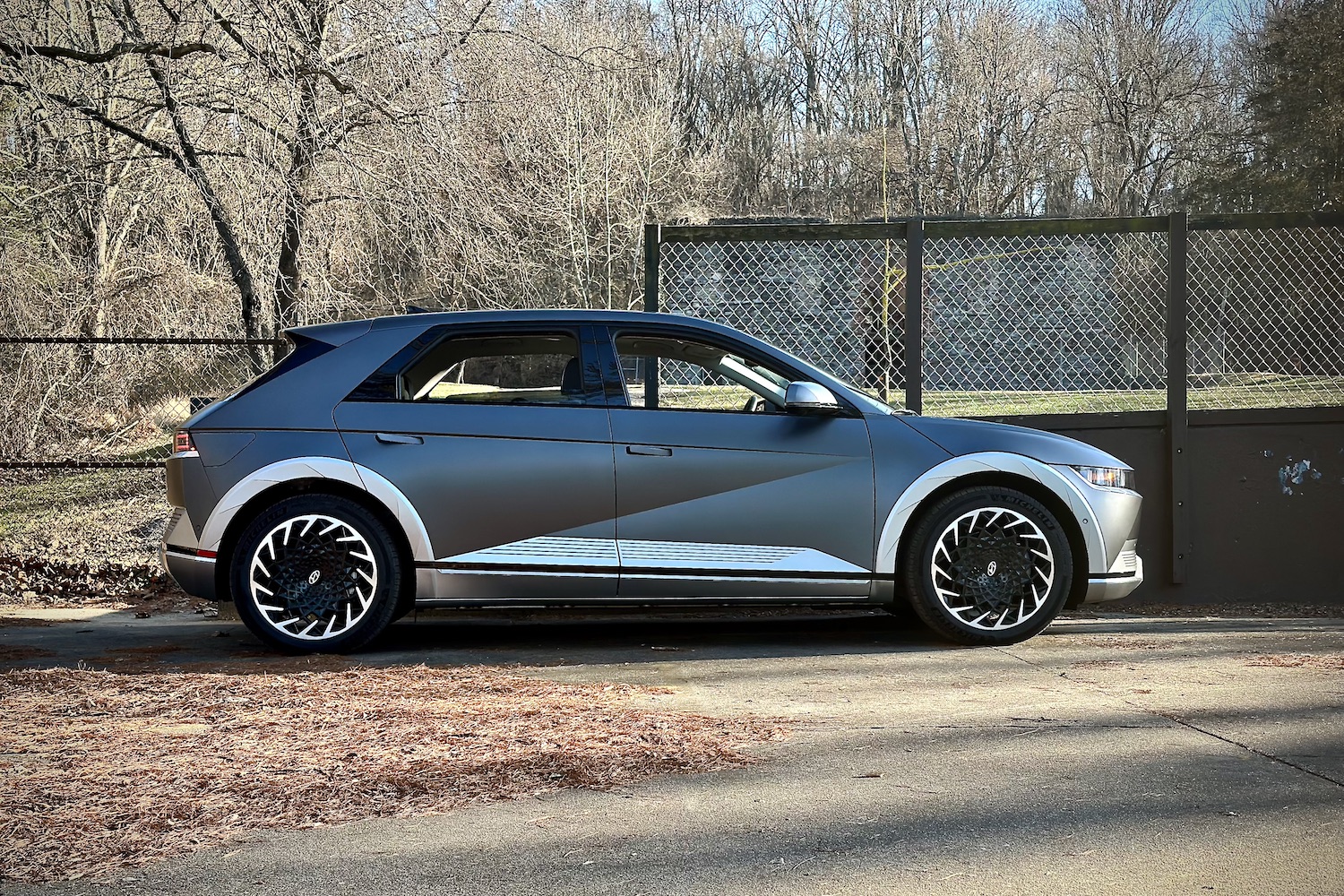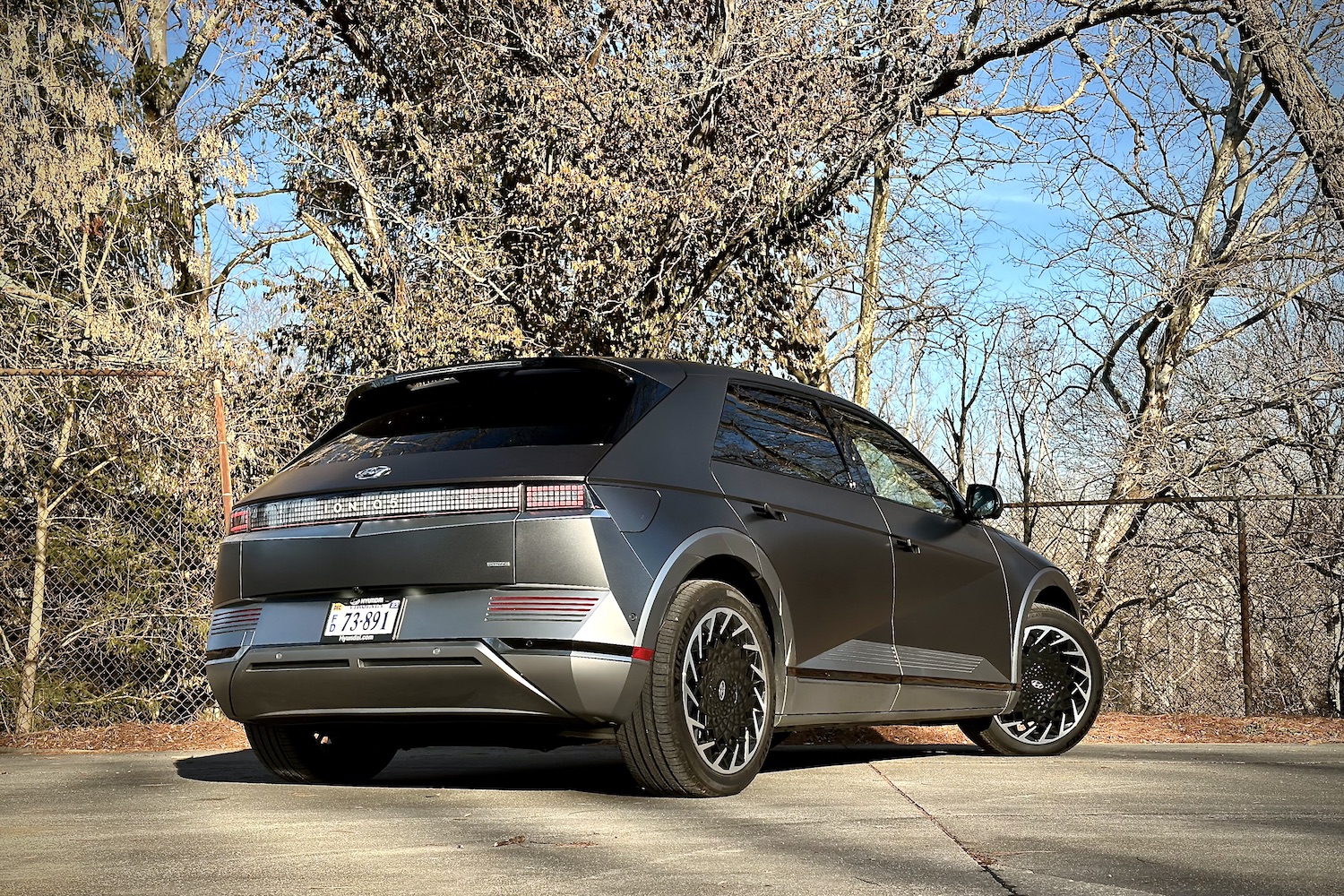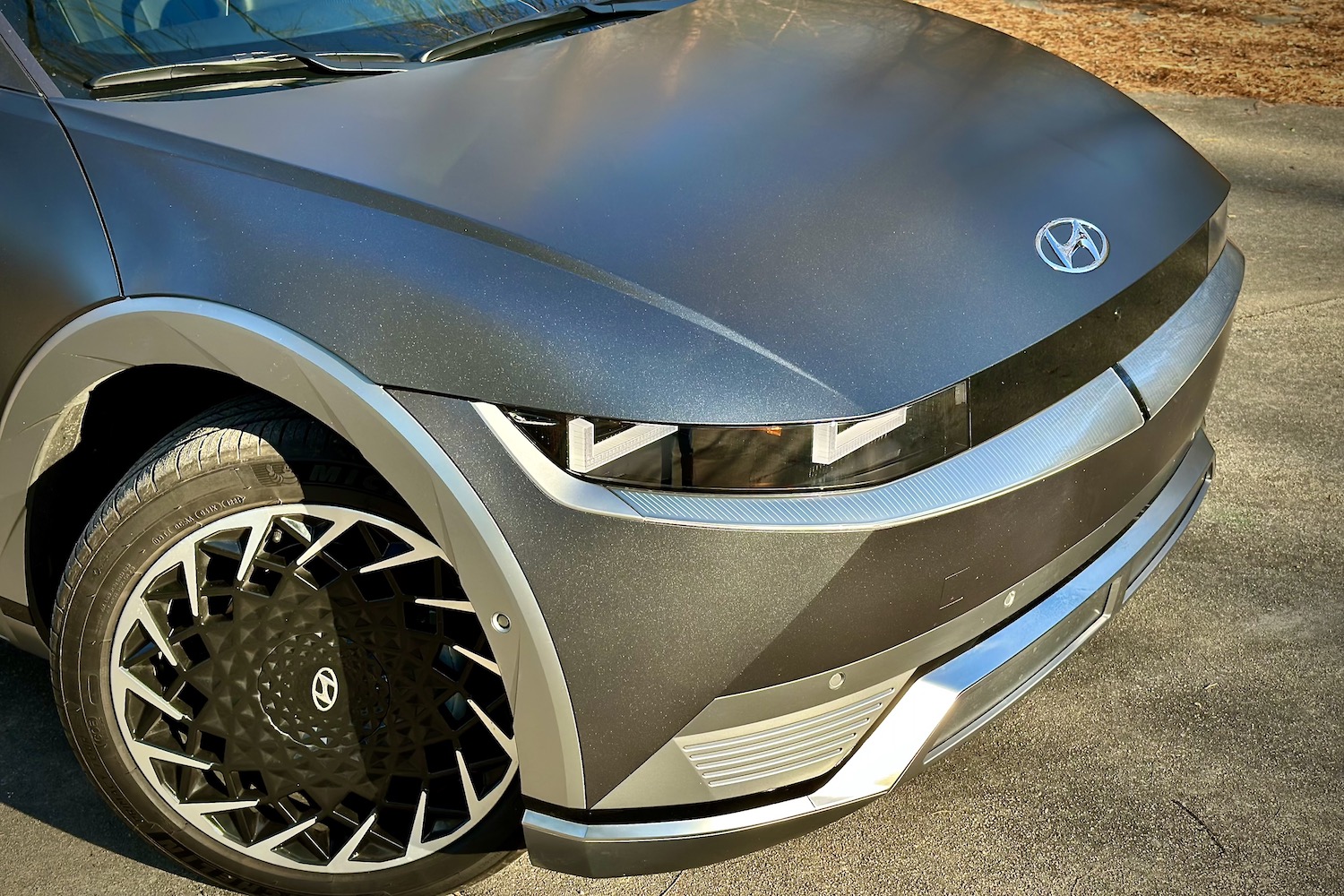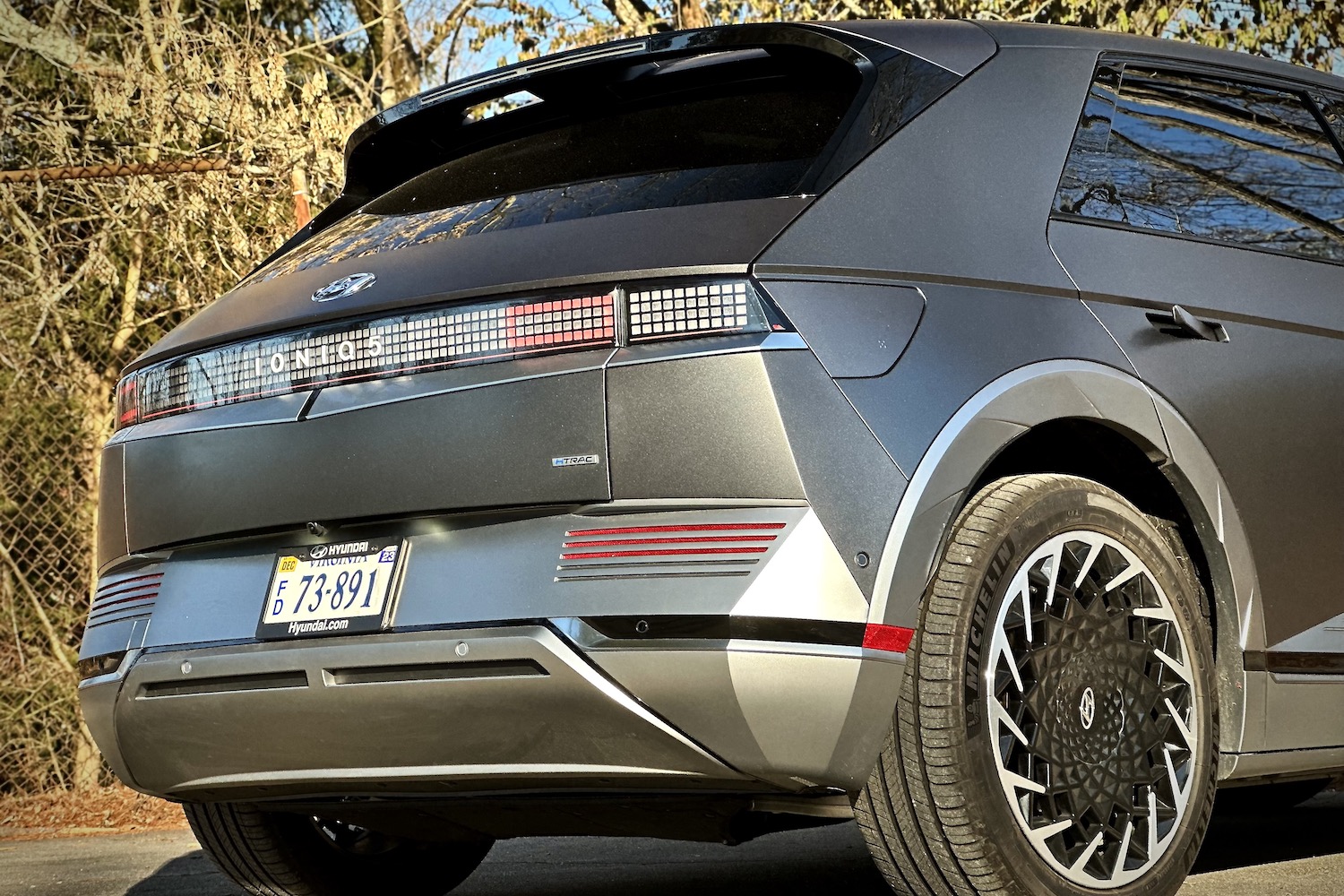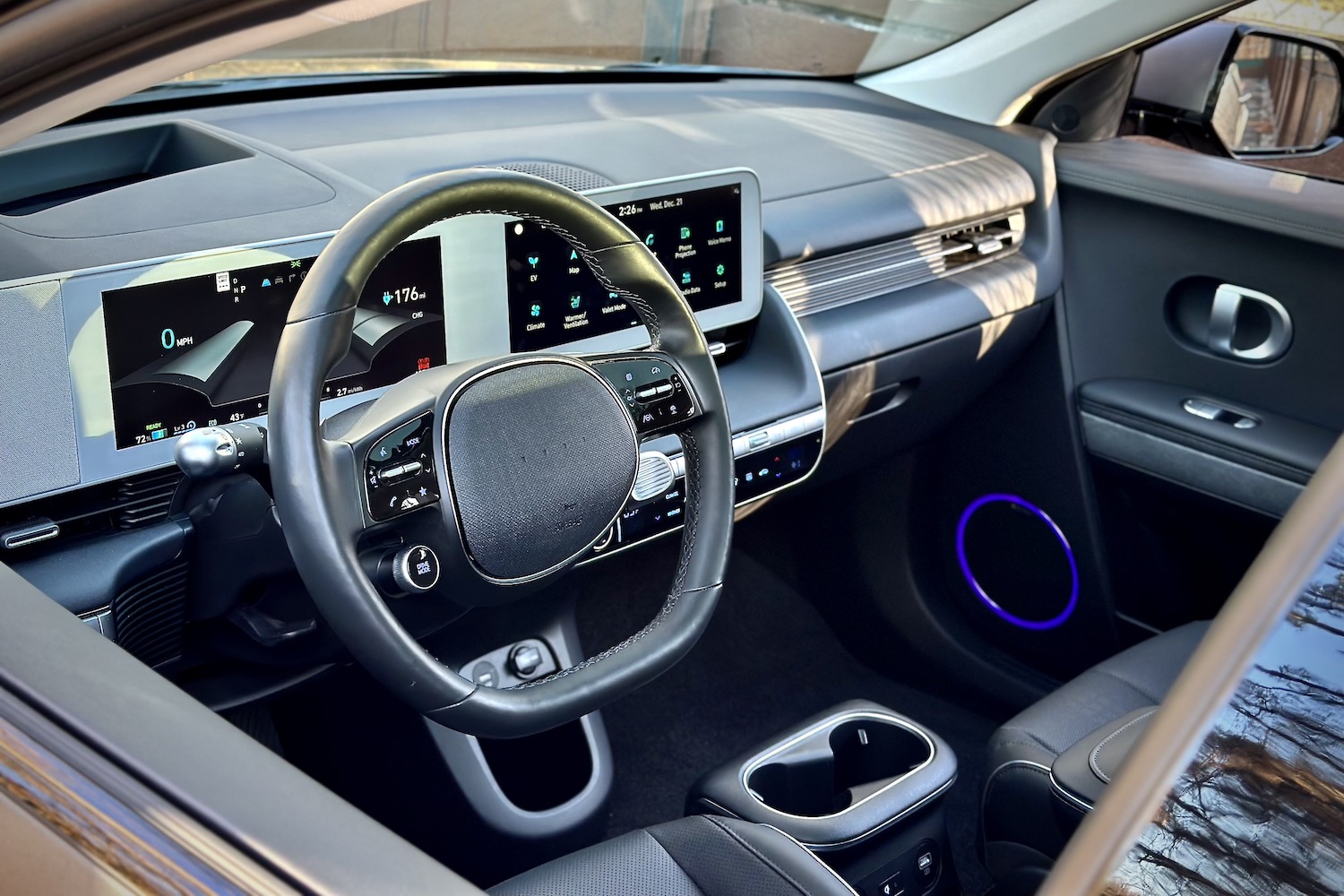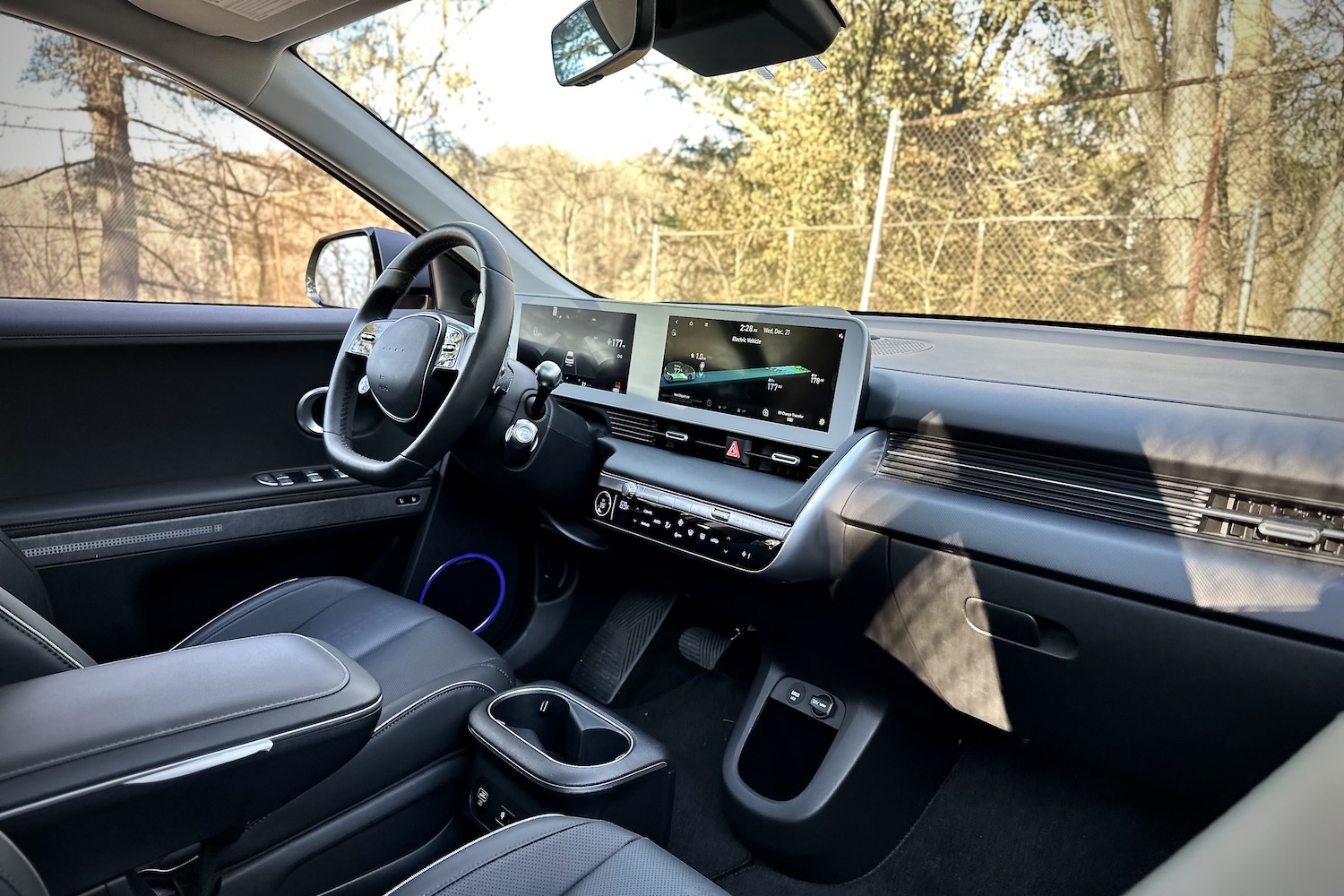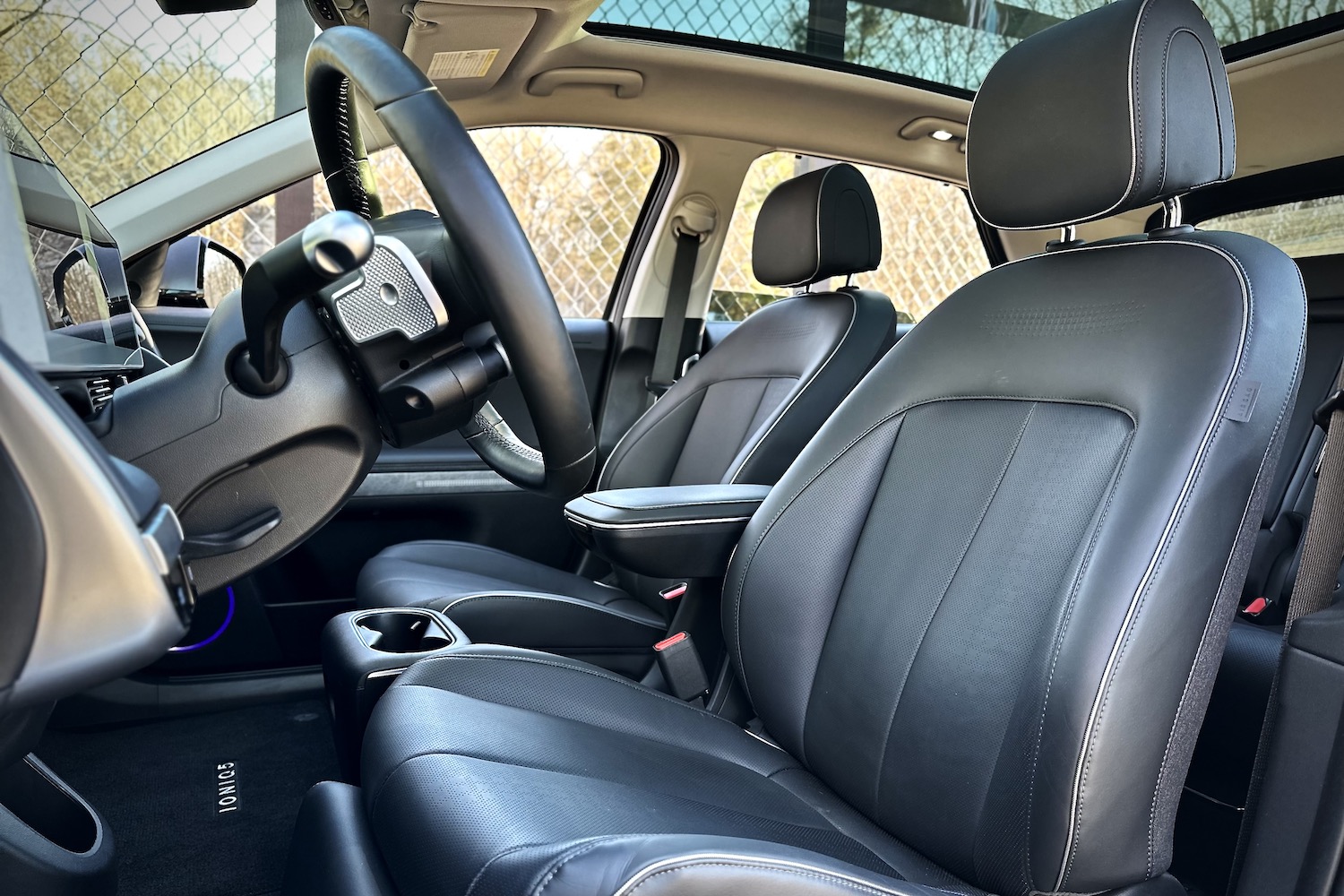“Attention seekers can look elsewhere. Hyundai's Ioniq 5 is an extraordinary EV for ordinary drivers.”
- Rapid charge times
- User-friendly interior
- Unique exterior styling
- Roomy cabin
- Quick acceleration
- Tiny frunk
Hyundai’s come a long way in the past few decades. The South Korean automaker has gone from being a value-oriented brand with affordable vehicles to offering cars with daring designs and semi-luxurious touches. Now, Hyundai has set its sights on becoming a force in the all-electric scene with EVs that utilize its Electric-Global Modular Platform (E-GMP). The first EV on this platform is the all-new 2022 Ioniq 5, which has arrived to compete with heavyweights from Tesla, Ford, Chevrolet, and Volkswagen.
The Ioniq 5 may be the first, but it won’t be the last. It’s just the beginning of the new Ioniq subbrand that will include more SUVs and some sedans. Those are coming later, but the Ioniq 5 is here now, and it’s making waves in the growing electric SUV segment. It’s already won numerous awards and been named Car of the Year by multiple organizations.
There are three different trim levels for the Ioniq 5: SE, SEL, and Limited. The number of electric motors and battery pack size further differentiates each model. Pricing ranges from $41,245 (including the mandatory destination fee) to $52,395 for the Limited trim. Our test vehicle was a loaded Limited with a matte paint job and carpeted floor mats, bringing the price up to $56,920. Because of changes to the federal tax credit, the Ioniq 5 doesn’t qualify for it anymore, though shoppers may still qualify for state tax credits.

Design and interior
For being futuristic vehicles that are meant to peek into the future, modern electric cars are pretty boring. The Tesla Model Y is a snooze fest, the Volkswagen ID.4 has a dreary design, and the Subaru Solterra doesn’t look all that special. We’re still 40 years away from the time period of The Jetsons, so automakers still have time to make the radical flying machines that we were promised. But why do current automakers resort to designing EVs that are so mundane? Hyundai’s designers must have felt the same way, because they clearly saw an opening and capitalized on it with a stunning design that’s unique.
The boxy proportions, pointy front end, sharp body lines, and pixel-inspired lights give the Ioniq 5 a retro design that looks like it’s a car from an ’80s video game. While some EVs have one or two unique design elements that help them stand out, the Ioniq 5 is one of the few EVs that stands out because it’s so different. In a sea of cars that all look the same, the Ioniq 5 feels like finding a new species.
While the exterior design of the Ioniq 5 is radical, the cabin is more traditional. That’s not a slight against the EV, as there are plenty of quirky interior design elements, but they’re nowhere near as in-your-face as the Ioniq 5’s beak-like front end. The simple two-spoke steering wheel feels elegant, while the way the central touchscreen and digital instrument cluster are integrated into a single off-color trim piece is a fun take on things that are usually dull. The curvature of the door panels and pixel design scattered throughout the cabin help the Ioniq 5’s interior feel special.
It doesn’t just look futuristic; it’s pragmatic. The center console can slide up to five inches for extra storage space, there’s a leg rest for the driver’s seat to let the driver relax while charging, and the rear seats slide fore and aft and also recline. With the Ioniq 5’s feature-filled interior and massive cabin (it’s larger than Hyundai’s midsize Palisade), it makes for a great family-friendly vehicle. Compared to its closest competitors, the Ioniq 5 has more interior space than options like the Volkswagen ID.4 and Ford Mustang Mach-E — and feels like it in the real world. Unfortunately, it’s down on cargo capacity, with 27.2 cubic feet of space behind the rear seats.
The Ioniq 5’s seats are comfortable and offer plenty of adjustment, while material quality is mostly excellent, which is what we’ve come to expect from Hyundai. These are the kind of seats you can sit comfortably in all day — you’ll need to stop to charge before you need to stop to stretch. Plus, the all-electric powertrain and a liberal amount of sound-deadening result in an interior that’s eerily quiet. You’ll have to get the Ioniq 5 up to triple-digit speeds before wind noise makes its way into the cabin.
The Ioniq 5’s retro design is unlike anything else on the road.
For the most part, there’s little to complain about inside the Ioniq 5 thanks to its mix of smart design with eco-friendly and upscale materials. Most controls are easy to use, except the inverted radio tuning button, which for some reason requires an upward press for lower channels and a downward press for higher channels. That’s maddening. To set the Ioniq 5 in motion, you have to twist the center-console-mounted stalk, which can be a tough switch for drivers who are used to more traditional gear shifters. Unlike most EVs, the Ioniq 5’s frunk isn’t really a space for extra cargo. It’s a tiny little storage compartment that’s barely big enough for a few pints of ice cream, making you question why it even exists.
Tech, infotainment, and driver assist
Hyundai brings some serious heat with the Ioniq 5’s list of standard tech features. The EV has two 12.3-inch screens that are integrated into a single unit. The central screen is a touchscreen, while the screen that’s placed directly in front of the driver acts as a digital instrument cluster. Unlike most electric cars, the Ioniq 5 has a separate digital display for the HVAC controls, so you don’t have to go searching through the menus to make changes. But things like heated seats, smartphone applications, and the radio still require you to go through a few menu screens to access.
Both 12.3-inch displays are gorgeous, with crisp graphics. Hyundai has become a standout brand for its infotainment system, and it’s nice to see that the automaker didn’t mess with a proven system with the Ioniq 5. The Limited trim we tested came with every imaginable feature, including Apple CarPlay and Android Auto, an eight-speaker Bose audio system, a wireless charging pad, and Hyundai Digital Key. The latter allows owners to use their smartphone to lock, unlock, and even drive their vehicle without a traditional key fob.
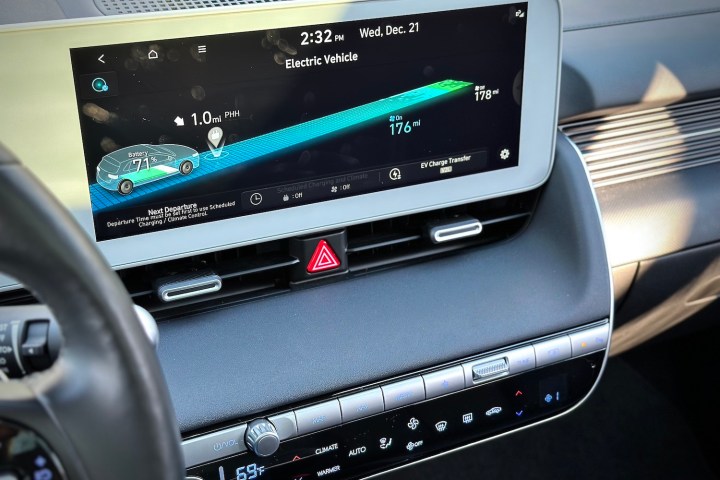
One of the cooler features available on the Ioniq 5 is its head-up display. It’s available with an augmented reality navigation system that’s similar to the one found in Mercedes-Benz’s vehicles, but differs in the way it displays arrows to stop you from making a wrong turn. It’s slick and works incredibly well. As one would expect from an electric car, the navigation system provides a lot of information on nearby charging stations in case you’re running low on juice. An updated version of the Hyundai Blue Link application is also included for the first three years of ownership, allowing owners to remotely scheduling charging for their vehicle, preset climate controls, or check how much range is left.
Hyundai has one of the best infotainment systems on the market and it’s nice to see the Ioniq 5 carry that torch.
Drivers will also find nearly every conceivable safety feature as standard. Features like Forward Collision Avoidance Assist, which is a combination of automatic emergency braking and forward collision warning, come standard. In addition to detecting oncoming vehicles, the system can also detect pedestrians, cyclists, and oncoming vehicles, then apply the brakes if it anticipates an accident. Higher trims, like the SEL and Limited, come with a more advanced version of the system that can detect vehicles approaching from the side. Another major standard feature is Blind-Spot Collision Avoidance Assist, which combines blind-spot monitoring and brake assist to stop you from running into a vehicle that’s in an adjacent lane. The Limited trim gets Hyundai’s Blind-Spot View Monitor system, which provides a real-time view in the instrument cluster of what’s next to the Ioniq 5 when the car’s turn signal is on.
Adaptive cruise control with automatic lane centering is included with Highway Driving Assist, which is standard on every Ioniq 5. Move up to the SEL trim and above and you’ll get Highway Driving Assist 2. It’s a more advanced system that adds lane-change assist, a machine learning function that learns how the driver drives and tries to mimic that, and a lane-centering feature to keep the car within its lane. Highway Driving Assist 2 works incredibly well, and the lane-change assist feature is one of the cooler, yet stranger things we’ve encountered in a vehicle. It slowly directs the wheel to the lane you’ve signaled, but doesn’t fully make the lane change. Beyond slight ping-ponging on highway corners, the system worked flawlessly.

While Hyundai’s safety systems are impressive, other automakers have really stepped their game up with hands-free systems. Vehicles like the Mach-E and Chevrolet Bolt EUV are available with hands-free systems that work incredibly well. For most, Hyundai’s Highway Driving Assist 2 system is all the autonomy they’ll ever need in a car, but for some, knowing that there are more advanced systems on the market may be enough to sway them to another vehicle.
Driving experience
The Ioniq 5 forgoes the need to match rivals with an overly sporty trim or a quad-motor configuration with neck-snapping acceleration. Instead, its lineup is much more down to earth, and far more oriented toward people who want to drive their cars everyday than those who feel the need to collect likes on Instagram.
The modest Ioniq 5 SE Standard Range comes with a single electric motor that makes 168 horsepower and a 58-kWh battery pack. These aren’t the flashiest figures, but they result in an EV with 220 miles of range. The SE, SEL, and Limited step things up with a 225-horsepower electric motor and a larger 77.4-kWh battery pack that brings a range of 303 miles. Drivers looking for the most range possible out of the Ioniq 5 will want to explore this configuration. Ioniq 5 trims with the 77.4-kWh battery packs are available with a second motor that brings all-wheel drive and a rating of 320 horsepower for between $3,500 to $3,900 depending on the trim. Range tops out at 256 miles. This is a well-rounded lineup of powertrains with an option for nearly every buyer imaginable.

The Limited trim that we tested came with the dual-motor configuration and the 77.4-kWh battery pack. It’s the most expensive powertrain configuration available, but it’s bound to be the most popular choice because of its performance and all-wheel drive availability.
While performance takes a back seat, the Ioniq 5 is a pleasant, enjoyable EV.
There’s a lot to like with the dual-motor Ioniq 5. With a 0-to-60 mph time of 5.1 seconds, the electric SUV features strong acceleration and the pin-you-into-your-seat feeling that electric SUVs are known for. The Ioniq 5’s numbers also line up well with competitors like the ID.4 and Mach-E, though the latter is slightly more performance-oriented and has both higher horsepower figures and quicker acceleration times. While the Ioniq 5 doesn’t have as impressive figures as some of its rivals or the same glued-to-the-road feel, the EV is plenty capable and enjoyable to drive. Plus, this isn’t a performance-oriented EV. Its suspension is geared toward comfort than performance, and its steering doesn’t provide a lot of feedback.
In our week with the Ioniq 5, we went on a few long trips and plenty of short urban jaunts. With temperatures hovering around 40 degrees, a 62-mile journey actually took 105 miles out of the Ioniq 5’s electric tank. This was at speeds slightly higher than the posted limit at 65 mph and with us cycling the heat on and off. The heated seat was on for the driver for most of the trip. Having the heat on at a modest 72 to 74 degrees dropped range by roughly 33 miles at the beginning of our trip.

Unlike the Hyundai Kona Electric, the Ioniq 5 is available with multiple regeneration modes. The strongest, i-Pedal, can bring the EV to a complete stop without touching the brake pedal for true one-pedal driving. If that’s a little too strong, there are three other different levels of regen to choose from, as well as an Auto mode for drivers who don’t want to worry about regeneration.
Many EVs suffer from too many driving modes, overly aggressive sport modes, or a disconnected driving experience. The Ioniq 5 doesn’t stand out in any way, but it’s comfortable, quiet, refined, and fun. That’s more than enough for most drivers.
Gas mileage and safety
Ioniq 5 models with the available 77.4-kWh battery pack and rear-wheel drive are rated by the Environmental Protection Agency (EPA) to get up to 303 miles of range. Fuel economy is rated at 114 MPGe combined (132 MPGe city, 98 MPGe highway). Opting for all-wheel drive brings 256 miles of range and slightly lower fuel economy figures of 98 MPGe combined (110 MPGe city, 87 MPGe highway). The SE Standard range is the only trim in the lineup to come with a 58-kWh battery pack and a single electric motor on the rear wheels. It’s rated at 220 miles of range and can get up to 110 MPGe combined (127 MPGe city, 94 MPGe highway).
Any EV that gets over 300 miles of range is impressive, but the Ioniq 5 trails the Mach-E (314 miles), Model Y (330 miles), and Kia EV6 (310 miles). It does offer more range than the ID.4, Bolt EUV, Subaru Solterra, Toyota bZ4X, and Kia Niro EV. Hyundai is boosting the Ioniq 5’s range for 2023, too, so certain trims will arrive with more range for the new model year.
One thing that separates the Ioniq 5 from its competitors is its charging capability. The electric vehicle uses an 800-volt architecture that allows it to go from 10% to 80% charge in just 18 minutes when plugged into a DC fast charger that provides up to 250 kilowatts of power. We weren’t able to find a charger that delivered this kind of power, but even readily available chargers can zap the Ioniq 5 from 10% to 80% charge in 25 minutes. These figures hold true in the real world and do wonders to ease range anxiety. Another cool feature of the Ioniq 5 is that when you plug the vehicle into a charger and begin charging, it tells you that charging has commenced in a booming voice. I can’t tell you how nice this is, especially for new EV owners.

If you’d rather charge at home, we recommend getting a Level 2, 240-volt charging station, which will get you from 10% to 100% in six hours and 43 minutes. The Ioniq 5 also has a neat party trick called vehicle-to-load, which can power small electronics or other electric vehicles, albeit at a slow rate. This can really come in handy when you’re tailgating or in the middle of a blackout, as the Ioniq 5 can charge a fridge or a TV.
The National Highway Traffic Safety Administration has only crash-tested the all-wheel-drive version of the 2022 Ioniq 5. That model received a five-star overall safety rating. In the Insurance Institute for Highway Safety’s crash tests, the electric SUV did well enough to earn a “Top Safety Pick+” award. It earned a rating of “Good” in all six crash tests, comes with headlights that earn a rating of “Acceptable” as standard, and has a front crash prevention system that earned a rating of “Superior.”
Hyundai offers the same warranty on the Ioniq 5 as it does on its gas-powered vehicles. The electric SUV is backed by a five-year, 60,000-mile new vehicle warranty and a 10-year, 100,000-mile powertrain warranty. Hyundai’s electric vehicles also come with a 10-year, 100,000-mile battery warranty. These are excellent warranties for the segment.
How DT would configure this car
Going straight to the top of the ladder to the Limited trim not only gets you the most high-tech features, but also the most convenience features, like a sliding center console, vehicle-to-load functionality, a panoramic sunroof, ventilated front seats, and an eight-speaker Bose audio system. Automatic park assist, Highway Driving Assist 2, Blind Spot View Monitor, and a head-up display are also included.
While the all-wheel-drive model brings improved acceleration, we recommend the rear-wheel-drive model, as it has 303 miles of range and saves $3,900 off the bill for the Limited trim. Drivers that live in areas that get inclement weather should look into getting all-wheel drive.
The EV to beat
The 2022 Hyundai Ioniq 5 is one of the best vehicles on the market, full stop. It just happens to be an EV. With its superfast charge times, innovative features, comfortable driving experience, and high-tech features, the Ioniq 5 delivers an exciting experience that’s sure to draw consumers to EVs. And that’s before you consider its radical design.
The Ford Mustang Mach-E is one of the more obvious competitors to the Ioniq 5. Its use of the iconic Mustang name translates to a sporty driving experience, sharp styling, and peppy acceleration. It’s also a high-tech electric SUV with Ford’s hands-free BlueCruise system and a large 15.5-inch touchscreen. Configure the Mach-E properly and you’ll get 314 miles of range with pricing starting at $44,995.
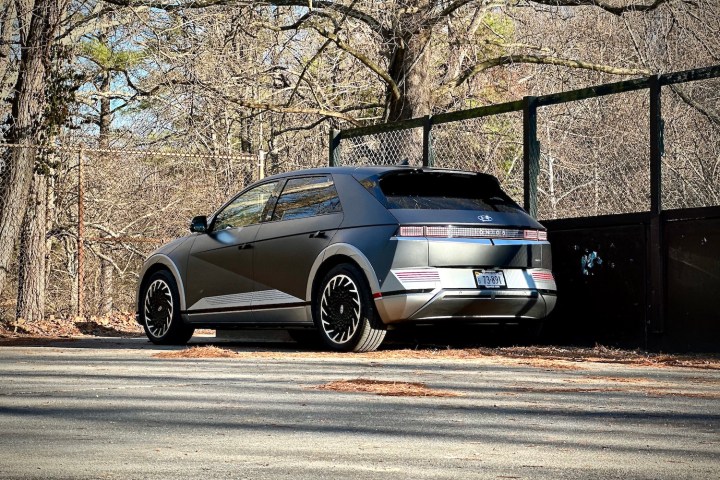
For drivers seeking something a little more traditional, there’s the Volkswagen ID.4. Pricing for the electric SUV starts at $42,525, while range tops out at 280 miles per charge. The ID.4 isn’t nearly as powerful, tech-friendly, or usable as the Ioniq 5, but it has more cargo capacity and a more serene ride. It’s the choice for drivers wanting a no-frills electric SUV.
In one of its higher trim levels, the Ioniq 5 is similarly priced to some luxury models, bringing it closer to competitors like the Tesla Model Y. Of course, most people see a Tesla as a status symbol and not just as a car. It’s packed with high-tech features, is available with three rows of seating, and has a prominent design. The Model Y Performance trim has blistering acceleration, while the Long Range trim can travel up to 330 miles. Tesla increases pricing for its vehicles whenever it wants, and after the recent set of updates, the Model Y now starts at $67,190.
Should you get one?
Yes, yes, yes. Hyundai has made an electric vehicle that’s not for attention seekers, but for people that want an EV that can actually replace a gas-powered car for daily use and is firmly rooted in the present, despite its rad retro design.


